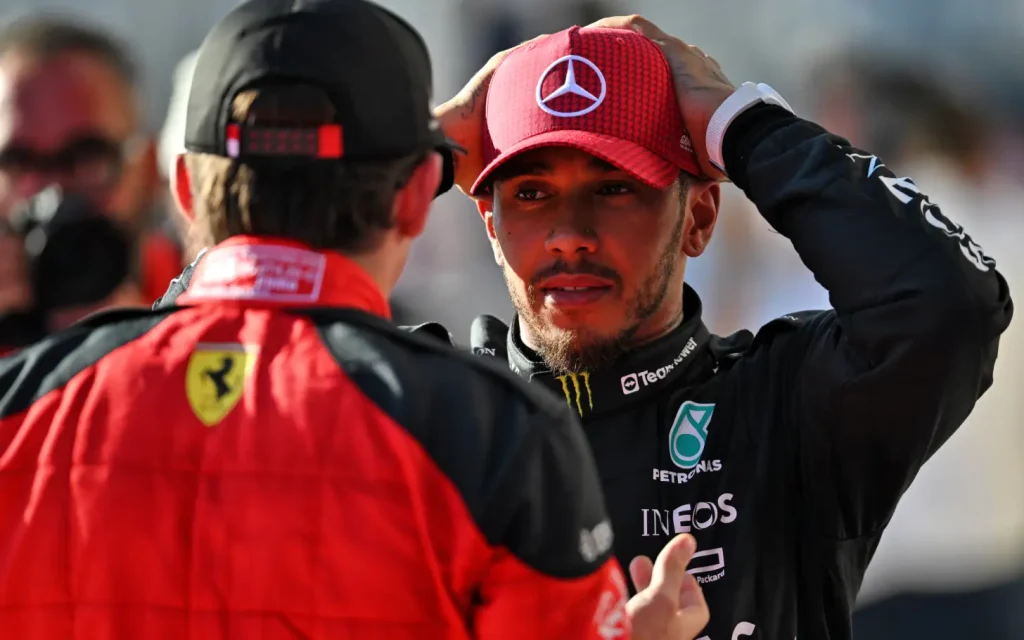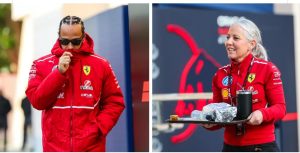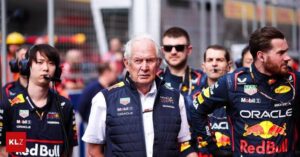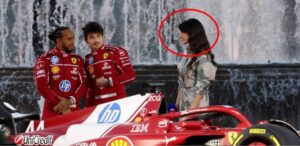BREAKING NEWS: Hamilton and Leclerc Disqualification Chaos at 2023 US GP Revisited…….

Hamilton and Leclerc Disqualification Chaos at 2023 US GP: What Happened?
As Formula 1 returns to the Circuit of the Americas (COTA) for the 2024 United States Grand Prix, fans are reminded of last year’s chaotic post-race disqualifications involving two top drivers: Lewis Hamilton and Charles Leclerc. Both had their strong race performances nullified after a technical breach was discovered beneath their cars.
In the 2023 race, Hamilton crossed the line in second place, while Leclerc finished sixth. However, hours after the conclusion of the Grand Prix, both were disqualified. Hamilton’s penalty was particularly dramatic as he lost a podium finish, while Leclerc forfeited his sixth place. This double disqualification had a ripple effect on the race standings, promoting Lando Norris into second place behind the race winner, Max Verstappen, and moving Carlos Sainz up to an unexpected third.
But what exactly led to these shock disqualifications? The issue was discovered during routine post-race checks carried out by FIA Technical Delegate Jo Bauer and his team. The problem lay with the skid block, also known as the ‘plank,’ under both the Mercedes and Ferrari cars. After inspecting the cars, the FIA concluded that the planks had excessive wear, violating Formula 1’s technical regulations.
Specifically, the disqualifications related to Article 3.5.9 e) of the 2023 technical regulations, which govern the thickness of the plank assembly. According to the rules, the plank must be 10mm thick, with an allowable margin of wear down to 9mm due to track friction. The FIA found that both Hamilton’s and Leclerc’s planks had worn down beyond this limit, leading to their disqualification.
The disqualification decisions were announced nearly four hours after the race concluded, sparking considerable debate among fans and teams alike. For Hamilton, it meant losing out on what would have been a critical second-place finish behind Verstappen, who secured his 50th career victory at COTA. Leclerc, meanwhile, lost his sixth-place result, just a day after finishing third in the sprint race behind Hamilton and Verstappen.
The COTA track surface and the sprint race format were significant contributing factors to the excessive plank wear that led to the disqualifications. The Texas circuit is known for its bumps, which cause cars to experience higher levels of friction and wear. During the 2023 season, the sprint weekend format meant that parc fermé regulations came into effect after only one practice session, limiting the teams’ ability to gather data and make adjustments to their cars. This left Mercedes and Ferrari in a difficult position, as they had to balance the risk of running the cars low for better performance against the possibility of excessive plank wear.
Teams are allowed a small margin of error when it comes to plank wear, with a tolerance of 1mm after the car enters parc fermé. However, the skid blocks on both the Mercedes and Ferrari cars wore beyond the acceptable limits, resulting in the disqualification. The bumpy nature of the track at COTA, combined with the lack of time for proper setup adjustments during the sprint weekend, meant that both teams misjudged the level of wear their cars would experience.
Since then, Formula 1 has made changes to the sprint weekend format, addressing the time constraints that contributed to the miscalculations. Parc fermé rules now allow for more setup changes between the sprint race and the main qualifying session, giving teams more flexibility to adjust their cars and avoid similar disqualification scenarios in the future.
For Hamilton and Leclerc, the disqualifications were a bitter pill to swallow, especially after such strong performances on the track. The incident serves as a reminder of how fine the margins can be in Formula 1, where even a slight misjudgment can lead to severe consequences. As F1 returns to COTA this weekend, teams will undoubtedly be more cautious to ensure they stay within the regulations, avoiding a repeat of last year’s disqualification chaos.







